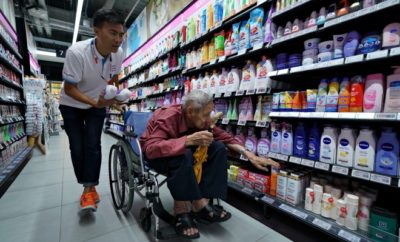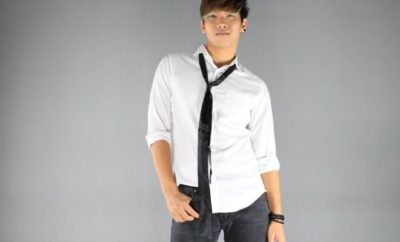
The Gen XY Lifestyle
NUS Launches Singapore’s First And Only Natural History Museum
Lee Kong Chian Natural History Museum houses three prized dinosaur skeletons and over a million plant and animal specimens.
The National University of Singapore (NUS) recently launched the Lee Kong Chian Natural History Museum (LKCNHM), Singapore’s first and only natural history museum. Its roots can be traced to the original Raffles Museum, which is the oldest such institution in the region.
Helmed by Professor Peter Ng, the LKCNHM is established through philanthropic gifts totalling S$56 million and is staffed by 16 scientists, curators, museum officers, collection staff as well as 18 outreach officers and administrative staff. The museum is a seven-storey building with 8,500 square metres of space and is home to over 560,000 catalogued lots and over a million specimens from throughout the region, forming an important research resource for Southeast Asian biodiversity researchers.
The main gallery consists of 15 zones, tracing the history of life on earth. Different sections are devoted to the origin of life and all major branches of the Tree of Life. This includes green plants, major groups of fungi, molluscs, arthropods, birds, and mammals. Other sections are dedicated to demonstrating how terrestrial vertebrates evolved from ‘fish’ and why birds are surviving ‘dinosaurs’.
Complementing the main gallery on the mezzanine floor is the heritage zone, where the history of the Raffles Museum and LKCNHM forms the backdrop to the history of Singapore’s biodiversity research. This gallery houses the so-called Cabinet of Curiosities where visitors can explore Singapore’s history of biodiversity exploration, find out more about the men and women who helped build this, and the biological treasures they have accumulated over 137 years. It also has a zone titled ‘Singapore Today’, which showcases the geology of the island as well as the important conservation work done by national agencies.
Extensive Collection of Southeast Asian Flora and Fauna
The LKCNHM is a treasure trove of the region’s rich natural heritage. Its internationally renowned Zoological Reference Collection, formerly called the ‘Raffles Collection’, dates back to 1849 and is one of the largest collections of Southeast Asian fauna in the region with over 560,000 catalogued lots and over a million specimens in total. It is the national focus point for all zoological material, and has one of the most comprehensive collections of Malayan animal specimens in the world. Of significance are the 150,000 specimens of Southeast Asian vertebrates, including one of the best bird and freshwater fish collections internationally. One of the most prized possessions on show at the museum is an Asian Brown Flycatcher bird collected by British naturalist Alfred Russel Wallace, the co-founder of the theory of evolution.
Complementing the bird and freshwater fish collections is the NUS Herbarium, founded in 1955, which documents over 33,000 plant specimens, mainly from Singapore and Malaysia. Visitors would also have the opportunity to see stick insects as well as mudskippers in some of the live exhibits. LKCNHM is also home to the three much talked – about diplodocid sauropod skeletons, nicknamed Prince, Apollonia and Twinky. Each of them is about 80 per cent complete, making them a rarity in sauropod dinosaur discoveries. These three skeletons were found between 2007 and 2010 in a quarry in a small town of Ten Sleep in the United States. These dinosaurs are the main attraction of the main gallery, showcasing the diversity and history of life on Earth.
Museum Admission
The LKCNHM is now open to the public. Its operating hours are from 10.00 am to 7.00 pm (last admission at 5.30 pm), Tuesdays to Sundays, including public holidays. Visitors will need to pre-book their admission tickets through SISTIC at www.sistic.com.sg. For information on the LKCNHM, please visit http://lkcnhm.nus.edu.sg/.










